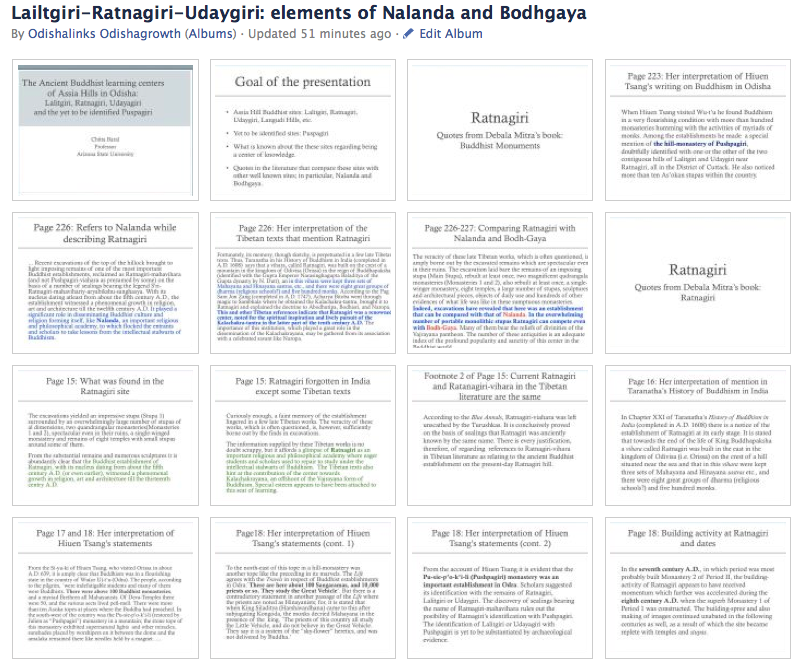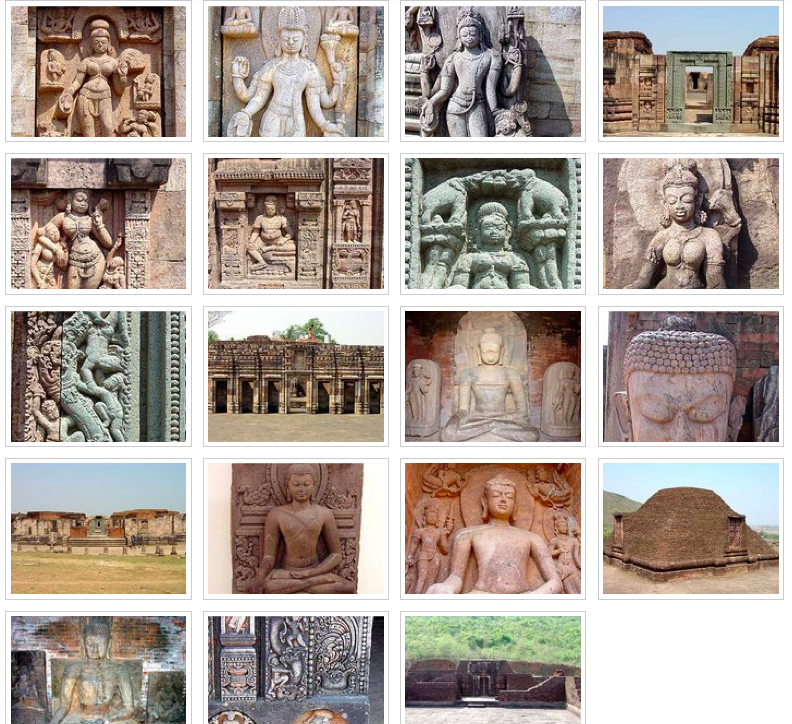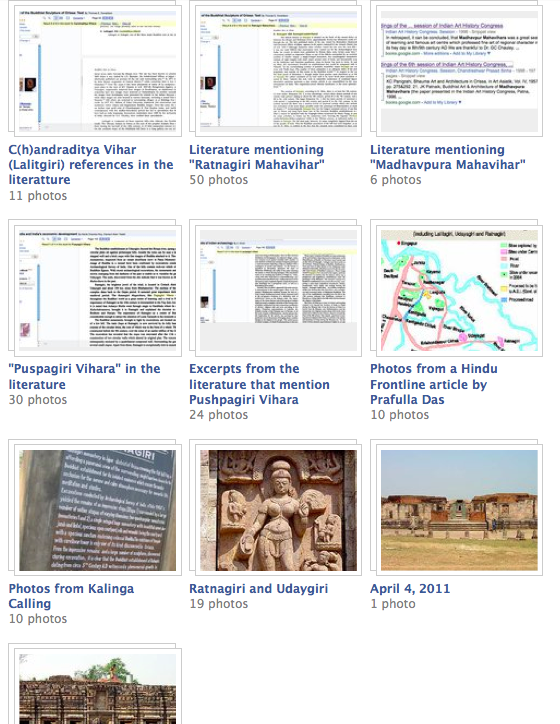The various reports are at http://www.innovationcouncil.gov.in/index.php?option=com_content&view=category&layout=blog&id=8&Itemid=10. The following excerpts are from the report at http://www.innovationcouncil.gov.in/images/stories/reportpeople/report%20to%20the%20people-full-report.pdf.
NInC is focused on encouraging and facilitating the creation of an Indian Model of Innovation by looking at five key parameters: Platform, Inclusion, Eco-system, Drivers and Discourse. The aim is to re-define innovations to go beyond formal R&D parameters and look at innovation as a broader concept that breaks sectoral silos and moves beyond a high-tech, product-based approach to include organisational, process and service innovation. The core idea is to innovate to produce affordable and qualitative solutions that address the needs of people at the Bottom of the Pyramid, eliminate disparity and focus on an inclusive growth model.
… Some key initiatives that NInC has focused on in the past year include: (a) Developing a framework to finance innovation for the Bottom of the Pyramid through the creation of an India Inclusive Innovation Fund; (b) Creating an eco-system for seeding innovations in regional industry with a focus on MSMEs, by facilitating the creation of Industry Innovation Clusters to drive job creation and productivity; (c) Leveraging our demographic dividend for innovation by creating a connected India through the spread of rural broadband in two years time to all 250,000 panchayats; (d) Nurturing innovation in the education system through action in schools and colleges by intervening in curriculum, talent-spotting of innovators among students and award of Innovation Fellowships, creation of a Meta University, as a global first, that rides on the National Knowledge Network to promote multi-disciplinary learning, facilitating the creation of innovation ecosystems at Universities through University Innovation Clusters; (e) Promoting an innovation culture through action in areas of communication and advocacy through an Innovation Portal and working through mass media organisations; (f) Creating an institutional framework for innovations in Government by facilitating the setting up of State Innovation Councils in each State, and Sectoral Innovation Councils aligned to Union Government Ministries; (g) Promotion of projects that create an innovation dividend like the setting up of a Rabindranath Tagore Knowledge City in Kolkata, setting up twenty Innovation Design Centres co-located in existing institutes; (h) Setting challenges for the Indian imagination to come up with solutions, especially those that relate to inclusive innovation; (i) Promoting co-creation and sharing of knowledge through Global Knowledge Partnerships, beginning with a Global Roundtable on Innovations for sharing ideas.
…
Developing an India Inclusive Innovation Fund
To promote inclusive innovation and entrepreneurship focusing on the needs of people in the lower echelons of society, an India Inclusive Innovation Fund (IIIF) was conceptualised, detailed and is currently under discussion with the Ministry of Finance and leaders of industry. The Fund seeks to promote enterprises engaged in developing solutions in key areas such as health, education, agriculture, handloom, handicrafts and other small business enterprises. The Fund will combine commercial and social returns. The Fund will be capitalised to an eventual target size of Rs 5000 crores to be achieved in phases. It will be kick-started with seed investment from the Government and bilateral/ multilateral institutions and go to scale with private capital. The Fund will be an autonomous, professionally managed entity with a social investment focus.
PROGRESS
The idea of the IIIF has been proposed to the Ministry of Finance and its initial contribution will kick start the Fund in the fiscal year 2012-13.
…
Nurturing Innovation through Education
To promote creativity and nurture innovations NInC has so far made six proposals to the Ministry of Human Resource Development (MHRD). These include five proposals made in May 2011 and one in September 2011.
(a) Creation of a separate scholarship stream of National Innovation Scholarships analogous to the National Talent Search Scheme. This will help identify talented children at the school level who think creatively, laterally and innovatively on issues that they perceive as important in their local environment. It is expected to have a multiplier effect of valuing creativity and innovation by parents, teachers and the learning system.
(b) Setting up an Innovation Centre in each DIET (District Institute of Education and Training) to enhance teacher training and enable them to become facilitators of creativity and innovative thinking. This could be done by tapping local creative talent on part-time basis into DIETs.
(c) Mapping of Local History, Ecology and Cultural Heritage by each High School in the country to create critical thinking on their local environment by students.
(d) Creation of a National Innovation Promotion Service to replace/add to National Service Scheme in Colleges to use college students to identify local innovations. This is a scheme of the Ministry of Youth Affairs and Sports which along with Ministry of HRD has been requested to examine its feasibility.
(e) Setting up a Meta University, as a redefinition of the university model in the 21st century by leveraging India’s National Knowledge Network to enable multi-disciplinary learning and collaborative knowledge creation.
(f) Setting up twenty Design Innovation Centres co-located in Institutes of National Importance. It has been proposed to set up these Design Innovation Centres in twenty select institutions and included in the 12th Plan for consideration by the Ministry of Human Resource Development. Co-location in campuses of national repute like IITs/NITs will help leveraging of academic and industry resources and give a boost to design capacity in the country.
(g) Setting up a pilot University Innovation Cluster. NInC proposes to identify and facilitate the development of 20 University Innovation Clusters across the country where innovation would be seeded through Cluster Innovation Centres.The CIC will provide a platform for the university and its partners to forge linkages between various stakeholders from industry and academia, initiate and assist innovation activities, encourage innovations in curricula and act as a catalyst and facilitator. It will also work closely with other industry clusters in its region. An initial pilot with University of Delhi has commenced and received overwhelming response from the student community.
PROGRESS
Ministry of Human Resource Development has green—lighted the following three proposals:
(a) Award of 1000 Innovation Fellowships at the School Level (Classes 9-12)
(b) Introducing the Mapping of Local History, Local Ecology and Local Culture and Heritage by all High Schools
(c) Setting up the first Meta University of the world for multi-disciplinary learning and collaborative learning All these three proposals will roll out in academic year 2012-13. Other proposals are also under consultation with Ministry of HRD.
(d) University of Delhi has set up a University Innovation Cluster as a pilot which has been widely welcomed
The 12th Five Year Plan will include all approved proposals. Most, except the proposal on Design Innovation Centres, can be done under existing policies and schemes by appropriate modifications.
…
Some of the key initiatives taken up by the National Innovation Council in its first year to nurture innovations through education are given below.
(a) Creation of a separate scholarship stream for National Innovation Scholarships analogous to the National Talent Search Scheme To complement the government’s National Talent Search Scheme, the NInC has proposed the introduction of a parallel stream of National Innovation Scholarships to be administered by NCERT and conducted through the decentralised management system it has put in place.This will help identify talented children at the High School and Secondary School level (Classes 9-12) who think creatively, laterally and innovatively on issues that they perceive as important. It will have a multiplier effect of valuing creativity and innovation by parents and teachers and will gradually evolve into a culture of valuing innovation in the schooling system. It is proposed that 1000 scholarships be considered for awarding each year under this scheme with 50% earmarked for innovations by students in schools located in non-urban areas and at least 33% earmarked for children from the field of liberal arts.
…
(e) Setting up a Meta University as a Global First to promote collaborative and multi-disciplinary learning using the National Knowledge Network
India pioneered the idea of the university with Nalanda and Taxila to explore a life of the mind and undertake an exploration of ideas.Today India is poised to reinvent the university of the 21st century as a new adventure of cross-cutting ideas facilitated by technology. In doing so it seeks to position the university as a cradle of innovation.The National Knowledge Network connecting India’s major knowledge institutions is already in place and provides a platform to facilitate this endeavour, further the fact that most of these major knowledge institutions in India are part of a public system, makes collaborative effort easier. Technology offers unprecedented opportunities to “disrupt the classroom” as traditionally understood, provide for individualised and customised learning and radically alter pedagogic systems to move towards collaborative and multi-disciplinary learning.
Seizing these new opportunities and leveraging the platform of the National Knowledge Network, the National Innovation Council has put forward a proposal to create the first global Meta University. The idea of a Meta University was first conceptualised by Charles Vest and later developed by Don Tapscott and Anthony Williams as a Global Network of Higher Learning to be realised in several stages.The basic idea of a Meta University as a collaborative platform where a network of Universities offers students a customised learning experience is eminently applicable in the Indian context.
The National Knowledge Network (NKN) initiated by the National Knowledge Commission, is already being implemented to connect all our universities, research institutions, libraries, laboratories, hospitals and agricultural institutions across the country with a high speed (multi gigabit) fibre based, broadband network. The NKN by networking all knowledge institutions and providing them with high speed connectivity aims to facilitate flow of information and create a platform for collaboration between researchers, academic faculty and students from diverse backgrounds and geographies. In addition, the Ministry of HRD aims to eventually provide connectivity to colleges and schools as well as support content creation through its initiatives. Further, the proposed Universities for Innovation Bill recognises flexibility as its DNA to facilitate innovation.Thus India provides unique opportunities for innovating with this idea of a ‘Meta University’ given the enormous unmet demand for high quality education in an environment of limited resources and the availability of a dedicated national network. It will enable the breaking down of silos of academic disciplines and help students to gain multi-disciplinary understanding to be able to create more “rounded” intellectuals for society.
The Meta University riding on the NKN envisages a collaborative and multi-disciplinary learning platform, where students enrolled in a primary college/university will be able to take courses available in other universities and colleges. With the help of Mentors, students will therefore be allowed to customise their learning experience and select options from a wide menu of choices, leveraging the specialisation of individual institutions. So it will be possible for an engineering student from, say IIT Kanpur to also enrol for a course in ancient history from the Jawaharlal Nehru University or a mathematics student from Indian Institute of Science pursue a course in comparative literature from the Jadavpur University.
The Meta University will reinterpret the concept of a University as not just a traditional, physical space of learning, but as a repository of knowledge and information that can be delivered in multiple ways, and can be accessed from anywhere and anytime. It will seek to enhance the learning experience through new and innovative delivery models of education that allow students and institutions to collaborate in unprecedented ways.
This model is low-cost, requires no brick-and-mortar, leapfrogs over conventional bottlenecks of non-availability of a talented faculty pool, and works within existing legal systems. It innovates on both the content and form of the twenty-first Century University and offers a unique model for the proposed fourteen Universities of Innovation mooted in India. It is hoped that this would become a model for the world to emulate to move towards collaborative and multi-disciplinary learning that redefines knowledge-creation and knowledge-sharing in the twenty-first century.
Though the internet and technology are fundamental to this conception of the Meta University, at the crux is not a new technology but a ‘new pedagogy’ that is more in tune with the requirements of the knowledge society of the twenty-first century. In such an environment there is a greater focus on moving from the chalk and talk model with the teacher at the centre, to a learner-centric, collaborative model that allows continuous learning from the environment.The web/internet therefore provides both a platform for communication and collaborations as well as a source of content.
The learning platform of the Meta University will incorporate these principles of collaborative and multi-disciplinary knowledge sharing, knowledge creation, openness and flexibility in its design. It will in effect be a test bed for experimenting with a new model of teaching and learning that may show the way for a new education model for the future.The detailed design of the Meta University will be undertaken by a core group of academics, heads of institutions and experts who would constitute the Board of Governors of this new Meta University. The National Innovation Council is working closely with government departments concerned and other stakeholders to implement these initiatives at the earliest.
(f) Setting up of 20 Design Innovation Centres by co-locating them with Institutes of National Importance Design is a key element of the innovation process and will be critical for driving innovation in the new knowledge economy. Design-driven innovations can ensure sustainable competitive edge, enhance industrial productivity and also address crucial challenges by harnessing design thinking for needs-based solutions. Design thinking is especially important for solving key problems because it works with a different set of processes: repeatedly reframing the problem, engaging with stakeholders, prototyping and testing solutions, exploring alternatives, visioning scenarios and so on.
In the last fifty years the world has seen dramatic changes and design has also transformed significantly along the way. Design and Design thinking are increasingly about building in capabilities that empower and enable people to use these resources, with quality of life and environment as the guiding principles, not just economic factors which are also important. However, we as a nation do not have enough state-of-the-art design institutes to enhance our innovation capabilities.The major bottleneck in clearance of setting up of Design Institutes across the country is availability of land, as well as access with an ambience conducive to professional education and trained and talented faculty. One such campus needs a minimum of 30 acres of land for construction of about 20,000 sq meter area of class rooms, studios, hostels, offices, faculty residences etc.
In this context, NInC has suggested a model of setting up Design Innovation Centres in twenty select locations to be included in the 12th Plan for consideration by the Ministry of Human Resource Development.These could be through co-location in campuses of national repute to ensure maximum convergence, optimum utilisation of existing resources and infrastructure, and to leverage a context of academia-industry interaction. These centres could be located in IITs, new IITs where there is industry presence, the NITs, and select Technical and Liberal Arts Universities. Co-location will address issues of availability of land and faculty, save costs, enable horizontal transfer of knowledge, as well as offer a ready talent pool to enable timely execution of this initiative. Also, co-locating these schools in institutes beyond IITs would also ensure that emphasis of design education is not on engineering and technology oriented product design alone, but could extend to other faculties/disciplines related to eco-friendly and green design for products and services, service design, communication design, systems design etc. broadly integrating design intervention in different sectors supporting economic growth and increasing employment opportunities. Further, existing National Institutes of Design could play a mentoring role to these centres given their expertise in the field.The aim is to make these Innovation Design Centres/Schools state-of-the-art institutions to enhance the innovation quotient in the country and foster a design culture.
Out of the above, the Ministry of Human Resource Development has green-lighted the following proposals: Award of 1000 innovation fellowships at the school level; Mapping of local history, local ecology and local culture and heritage by high school students; Setting up the first Meta University of the world for multi-disciplinary learning.
(g) Creation of Cluster Innovation Centres (CICs) at Universities
Over the years universities in India have become increasingly focused on their teaching function, imparting and disseminating knowledge and training to a large number of students.With a few notable exceptions research by and large has moved out of academic institutions to stand alone research centres and laboratories. Further, university linkages with industry and society have at best been weak and under developed. As a result, our Universities have not been at the vanguard of innovations that solve real world problems and result in creation of products and processes that boost the economy and help the common man. While far reaching systemic reforms in higher education are required and the government is committed to them, one significant way to revitalise the university system in the context of innovation is to strengthen its linkages with industry and society.
Recognising that educational institutions must be at the centre of the innovation process, in the last decade or so renewed efforts have been made by various stakeholders to promote innovations and entrepreneurship in our educational institutions. The Government has taken up various initiatives like setting up Innovation and Entrepreneurship Development Centres (IEDC) in educational institutions, Science & Technology Entrepreneur Parks, and Technology Business Incubators, in order to promote knowledge based and innovation driven enterprises. Other initiatives include creating better incentive structures to reward innovations, encouraging young talent through scholarships, making available risk/venture capital and other necessary ingredients to strengthen the institutional capacity for innovation in the country.
In order to strengthen these efforts and to make Universities hubs of innovation the National Innovation Council seeks to create Cluster Innovation Centres (CIC) at Universities with an aim to foster an ecosystem of innovation, and connect research with application for the benefit of society. The CIC will provide a platform for the university and its partners to forge linkages between various stakeholders from industry and academia, initiate and assist innovation activities, encourage innovations in curricula and act as a catalyst and facilitator. It will also work closely with other industry clusters in its region. The CIC will provide a range of services and facilities, starting from evaluating an idea for its innovation potential, advice on technical and commercial viability, advice on IPR issues, guidance on relevant schemes and grants, helping innovators find partners and collaborators including funding, business development and finally taking the products and processes to end users.The CIC will have an appropriate institutional structure to enable it to undertake a range of functions, and a lean management team with expertise in guiding stakeholders in innovation management.
The NInC aims to catalyse the creation of at least 20 such Cluster Innovation Centres at Universities and provide support for the clusters to bear fruit and sustain.The NInC is currently working with a few select academic institutions to showcase the potential of Cluster Innovation Centres and will scale up this activity to a larger number of educational institutions in the coming year.
November 18th, 2011
 Mrs. Mitra was the Director General of the Archaeological Survey of India (1975-1983) [Page 448 of this book] and has written extensively on various Monuments of India.
Mrs. Mitra was the Director General of the Archaeological Survey of India (1975-1983) [Page 448 of this book] and has written extensively on various Monuments of India.



